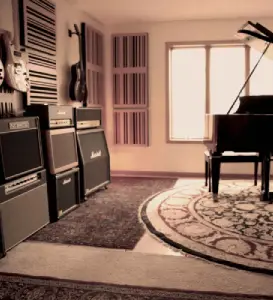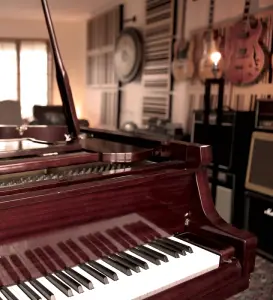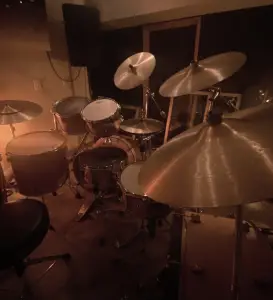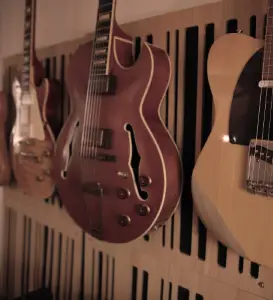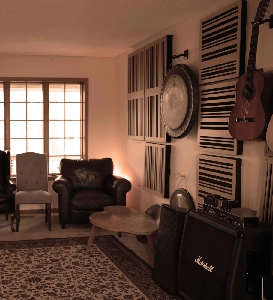ABOUT
MY PHILOSOPHY
The Learning Curve
By the time children reach 3 years of age, they typically are able to recognize approximately 1,000 words. By age 5 that number increases to about 10,000. [1] In elementary education, kids spend ~ 3-4 hours per school day developing their vocabulary skills while studying literature, history, science, and even mathematics; that is, approximately 15-20 hours per week, just in the classroom. With 165 school days in an academic year, young students spend approximately 500-600 hours per year in a classroom developing their verbal skills. This isn’t counting time spent with homework, entertainment, and social interaction, all of which play a part in developing linguistic skills. By the end of 3rd grade, most kids have devoted nearly 2,000 hours of class time toward learning how to read and write.
Hours spent developing mathematical/analytical skills - not nearly as many; maybe 45 minutes of daily class time and 15-45 minutes per day of homework, equalling somewhere between 125-250 hours per year working on math. It is easy to see why kids often have greater frustration with math than with other subjects.
A young student taking weekly 30 minute instrumental music lessons during a ~30-week school year spends about 15 hours per year learning their instrument in a structured setting. This equivalent to the number of hours the student spends developing their linguistic skills within the first week of the school year. This makes at-home time with the instrument is essential.
Especially for students under age 10, at-home practice really needs to be supervised by an adult. The complexity of musical grammar, along with the technical challenges of playing an instrument, demand a high level of focus and analytical thinking that young kids just aren’t capable of independently. Musical expertise isn’t required from the adult; just time and attention. This entails the investment of valuable time.
The Value of Music Training
Is musical training actually necessary for intellectual and personal development? Technically, no. My father never played an instrument - never took a single lesson, was never part of an ensemble in school; nothing at all. Yet he was able to graduate from the University of Chicago medical school with honors and lead a highly productive life. He isn’t the exception, either. In fact, of the folks I grew up with that attended top universities and eventually ventured into highly successful careers, I can only think of one that was involved with music at all. What is the value of investing in musical training, then?
Each of these individuals developed productive habits early in life that they enjoyed exercising. For some, it was reading novels, playing chess, or learning how to code. For others, it was excelling in athletics, creating artwork, or engaging actively with music. I’ve never known a productive, effective adult that favors watching television above all else. Whether doing something worthwhile, or frivolous and wasteful, time is spent either way. The more an individual enjoys spending time exerting themselves, whether it is with physical activities, solving problems, or engaging their creativity and imagination, the more effective their life will be.
Musical training involves developing highly sophisticated physical, analytical, and imaginative acuity. While there are many activities that also help to develop one or more of these, I argue music training addresses all three of these as effectively as any alternative. Moreover, it serves to mitigate one of the most common fears affecting many adults: the fear of public speaking. I can’t imagine being terrified of talking in front of an audience, whether it is an audience of 20 or 2,000. Yet many adults are hampered with this fear. This alone makes learning music worthwhile!
The benefits of musical training are multifold. Dexterity - “the hands of a surgeon” is a well-known idiom; I would venture to say the hands of Itzhak Perlman and Steve Vai are at least as agile as those of a surgeon. Analytical thinking - developing even an elementary grasp of musical syntax entails having an intuitive conceptualization of set theory, combinatorics, and at the very least, operations on the base-12 numerical system. Imaginative thinking - this speaks for itself.
What it Takes
I am often asked “How long will it take for me/my son/daughter to get good?”, and “How much time do I/my son/daughter need to practice each week?”. The first question has no answer. How good is “good”? But if there is an answer, it pertains to the second question as well. My answer to the second question is “more than zero”. Zero time is the level that most students - adult and youth alike - achieve. How long does it take to advance with musical training at 30 minutes per week/15 hours per year? Forever. Progress isn’t slow at this rate - it is literally nonexistent.
The success rate for adults is actually less than it is for kids, because there is no one to ensure that the effort gets put in. For kids, about 10% develop the habit of playing their instrument regularly. Of these, maybe 10% develop this habit independently, of their own volition; for the rest it is a matter of external influence. That is, a child is ten times more likely to develop a working routine if they’re able to rely on someone to ensure it for them; put negatively, ten times less likely if they can’t rely on external influence. That makes about 1 in 100 that make visible gains within 1-3 years of training when they themselves are left with the alternative of succeeding/failing - about the same number that finish their homework and get to sleep at a reasonable time every night without any external influence.
The ultimate reward from musical training - even if all the practical benefits are set aside - is to be able to educate and entertain oneself in a highly productive way. Few things are as rewarding, educational, and fun at the same time that can be enjoyed alone, as well as with 1-2 others, or even with hundreds of people together. Painting and like fine arts are rewarding, however these are usually solitary activities. While sporting activities are fun and productive, they usually require two or more in order to be fun, and the only way to enjoy sporting activity with more than ~20 people is to watch it. Music leads in all of these areas.
I opened Studio T so that the ability to develop self-enabling life habits becomes more likely for more people.
1. Assessment in Speech-Language Pathology: A Resource Manual”. Seventh Edition; Kenneth G. Shipley, Julie G. McAfee (2023)
